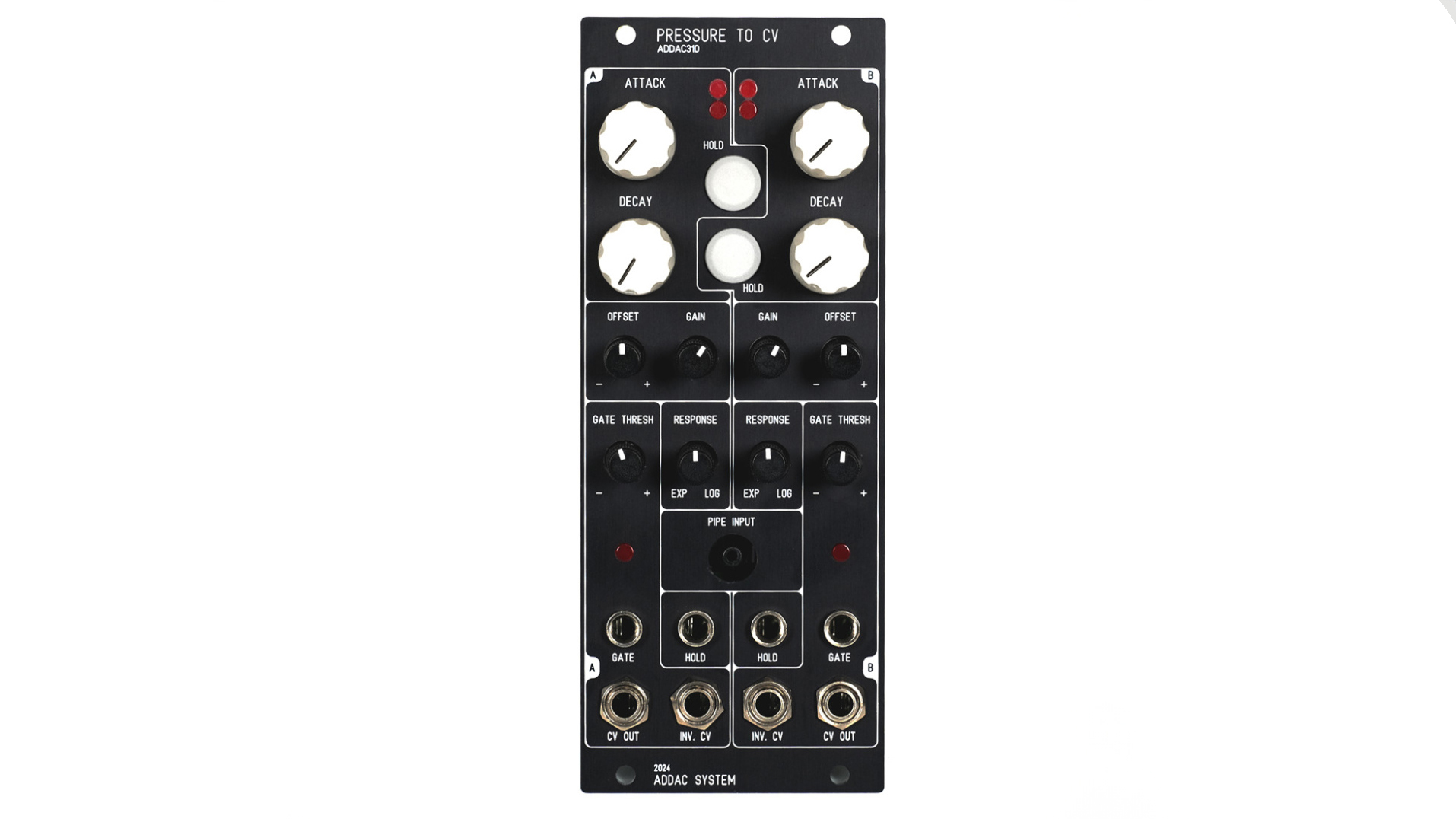MusicRadar Verdict
Easy to use, well built and could inspire a new way of approaching the music making process, which can only be a good thing.
Pros
- +
Excellent build quality.
- +
Easy to set pressure levels.
- +
Shallow learning curve.
Cons
- -
Awkward pipe when not in use.
MusicRadar's got your back
ADDAC System 310: What is it?
The idea behind the ADDAC System 310 module is to use varying pressures to control CV levels, to be sent to other modules. Nothing unusual there, as there are pressure-based controllers out there.
The difference here is that you get to keep your hands free, as the pressure is created with your mouth. Yes, that’s correct. A melodica pipe is connected to the front plate of the module, where there is a sensor that converts air pressure into an electrical signal that can then be further tweaked, ready to be patched elsewhere.
ADDAC System 310: Performance and verdict
The idea behind the 310 is a good one. Unless you are a vocalist, your mouth is usually free but hands are not, hence we use other methods to control our rigs and run modulations. With this you could modulate a signal purely by breathing into it.
That may sound tricky and it is. At first. But with a little practice it becomes fairly easy to get proficient and the on board controls make it easier. There are two channels that are identical but with completely independent controls, so you can use the single input from the pipe but form two distinct outputs, adding an extra element for performative synthesis. For example, you could have one channel control a filter cutoff, while the second channel controls the wet/dry mix of a reverb, with related but different rates and levels.
The 10hp face design is typical ADDAC. Simple and clear design, with a port for the melodica pipe, which is protected by a filter. Above that are controls for attack and decay, with a hold button, which can also be activated by CV. There are offset and gain knobs as well as a bipolar gate threshold knob.
Lastly, on the control section, is a response curve knob that allows you to set from any mix of exponential or logarithmic. Each of these individual controls is mirrored on the other side, for the second channel.
In use, the 310 is simple to dial in, has many potential uses and is very well made. The push-on pipe stays put even with accidental tugs. In fact the pipe is the only tricky part of the module. Where do you put it when not in use?
Want all the hottest music and gear news, reviews, deals, features and more, direct to your inbox? Sign up here.
We are used to arranging modules with patch points in certain places, for controlling cable clutter but as yet, having a much girthier pipe flopping around could be a nuisance for some. That said some clever person is bound to come up with a 3D-printed bracket or similar to keep it in check.
Along with the hold CV input, there are patch points for gate and CV out, alongside an inverted CV output, again mirrored for the second channel.
MusicRadar verdict: Easy to use, well built and could inspire a new way of approaching the music making process, which can only be a good thing.
ADDAC System 310: Specifications
- KEY FEATURES: Pressure to cv, Melodica pipe, two identical channels, LED level indicators.
- CONTACT: ADDAC

